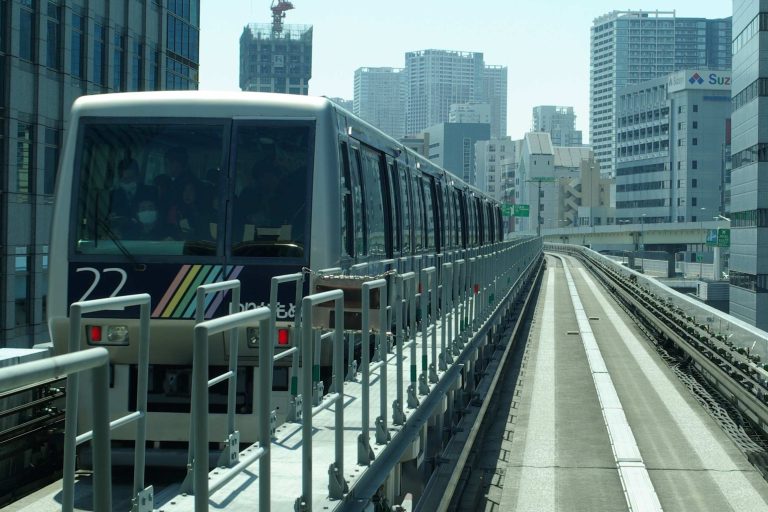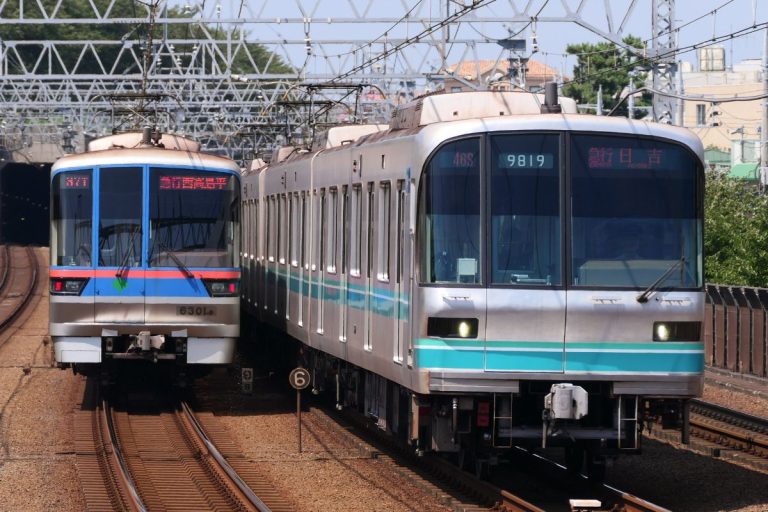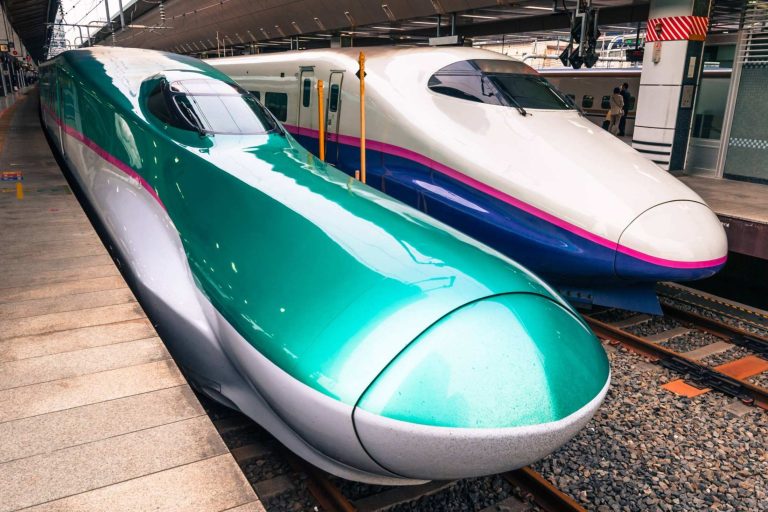Overview of Taxi Services
Taxi services have transformed dramatically over the past decade, evolving from traditional street hailing to sophisticated app-based platforms that put transportation at your fingertips. Modern ride-hailing services offer unprecedented convenience, allowing you to request a ride from virtually anywhere with just a few taps on your smartphone. These platforms have revolutionized urban mobility by providing reliable, professional transportation options that cater to diverse needs and preferences.
The integration of technology has made taxi services more accessible and user-friendly than ever before. Real-time tracking, upfront pricing, and cashless transactions have eliminated many of the uncertainties that once accompanied taxi rides. Whether you need a quick trip across town or a reliable ride to the airport, today’s taxi services provide multiple options to suit different budgets, group sizes, and comfort preferences.
Types of Taxi Services
Today’s taxi landscape includes traditional yellow cabs, ride-hailing apps, and specialized transportation services. Traditional taxis remain popular in many cities, offering street-hail convenience and regulated pricing. App-based services have gained significant market share by providing consistent service quality, transparent pricing, and the ability to track your ride in real-time. These platforms also offer various vehicle categories, from budget-friendly options to premium rides with enhanced comfort features.
Comparing Uber and Traditional Taxis
The choice between ride-hailing apps and traditional taxis often comes down to convenience, pricing, and availability. App-based services typically offer upfront pricing, eliminating fare surprises, while traditional taxis use metered rates that can vary based on traffic conditions. Ride-hailing platforms provide detailed driver information and vehicle tracking, while traditional taxis offer the spontaneity of street-hail availability in busy urban areas.
Convenience of Ride-hailing Apps
Ride-hailing applications have streamlined the entire transportation experience, from booking to payment. The apps automatically detect your location, suggest nearby pickup points, and provide estimated arrival times. Digital receipts, ride history, and integrated payment systems eliminate the need for cash transactions. Many platforms also offer ride scheduling features, allowing you to book transportation in advance for important appointments or early morning flights.
Safety Features in Taxi Services
Modern taxi services prioritize passenger safety through comprehensive background checks, vehicle inspections, and real-time monitoring systems. Licensed drivers undergo thorough screening processes, including criminal background checks and driving record reviews. GPS tracking allows both passengers and service providers to monitor ride progress, while emergency assistance features provide quick access to help when needed.
Ride Options Available
The variety of ride options available today ensures that every passenger can find a service that matches their specific needs and budget. From economical shared rides to luxurious private vehicles, the range of choices has expanded significantly. Understanding these options helps you make informed decisions about which service best fits your situation, whether you’re traveling alone, with a group, or have special requirements.
Each ride category offers distinct advantages in terms of cost, comfort, and capacity. Budget-conscious riders can choose shared options or standard vehicles, while those seeking enhanced comfort can opt for premium services with additional amenities. The flexibility of modern taxi services means you can select different ride types based on the occasion, time of day, or specific requirements of your journey.
UberX and Uber Comfort
UberX represents the most popular and affordable ride option, featuring standard vehicles that accommodate up to four passengers. These rides offer reliable transportation at competitive prices, making them ideal for everyday trips around the city. Uber Comfort provides an upgraded experience with newer vehicles, extra legroom, and temperature control preferences, perfect for longer journeys or when you want additional comfort without the premium price tag.
Specialized Services: Uber WAV and Uber Reserve
Uber WAV addresses accessibility needs by providing wheelchair-accessible vehicles with trained drivers who can assist passengers with mobility challenges. This service ensures that transportation remains inclusive and available to all community members. Uber Reserve allows passengers to book rides up to 30 days in advance, guaranteeing availability for important events, flights, or appointments when timing is crucial.
Green Rides: Uber Green
Environmentally conscious travelers can choose Uber Green, which features hybrid or electric vehicles that reduce carbon emissions. This service costs slightly more than standard options but allows passengers to make more sustainable transportation choices. The growing fleet of eco-friendly vehicles reflects the increasing demand for environmentally responsible travel options in urban areas.
Carpooling Options: UberX Share
UberX Share enables cost-effective travel by matching passengers heading in similar directions. This carpooling option reduces individual ride costs while maximizing vehicle efficiency and reducing traffic congestion. Passengers save money while contributing to more sustainable urban transportation, though the service requires some flexibility in terms of pickup locations and travel time.
Booking Your Ride
The booking process has become remarkably straightforward, thanks to intuitive app interfaces and streamlined user experiences. Most platforms guide users through each step, from selecting pickup locations to choosing ride types and confirming payment methods. Understanding the booking process helps ensure smooth transactions and reduces the likelihood of confusion or delays when you need transportation quickly.
Successful ride booking involves several key considerations, including accurate location information, appropriate ride type selection, and clear communication with drivers. Taking time to familiarize yourself with app features and booking procedures can significantly improve your overall experience and help avoid common issues that might arise during the process.
How to Use the App for Booking
Booking a ride typically begins with opening the app and allowing location services to identify your current position. You can adjust the pickup location by dragging the map pin or entering a specific address. After selecting your destination, the app displays available ride options with estimated prices and arrival times. Confirming your choice initiates the driver matching process, and you’ll receive real-time updates about your driver’s location and estimated arrival time.
Understanding Upfront Pricing
Upfront pricing eliminates fare uncertainty by providing the total cost before you confirm your ride request. This transparent pricing model considers factors such as distance, estimated travel time, current demand, and local market conditions. The displayed price remains fixed regardless of traffic delays or route changes, though additional charges may apply for tolls, airport fees, or significant changes to your destination.
Canceling or Modifying Your Ride
Most platforms allow ride cancellation within a specific timeframe without penalty, though fees may apply if you cancel after the driver has already started heading to your location. Modifying your destination is typically possible through the app, though significant changes might affect the final fare. Clear communication with your driver about any changes helps ensure a smooth experience and prevents misunderstandings.
Ride Scheduling with Uber Reserve
Uber Reserve enables advance booking for rides up to 30 days ahead, providing peace of mind for important appointments or early morning departures. This premium service guarantees vehicle availability and often includes additional features such as premium vehicles and experienced drivers. Scheduled rides typically cost more than standard options but offer reliability when timing is critical.
Accessibility Features
Modern taxi services have made significant strides in ensuring transportation accessibility for passengers with diverse needs and abilities. These improvements reflect a commitment to inclusive transportation that serves all community members effectively. Accessibility features extend beyond physical accommodations to include technological solutions that make ride-hailing more user-friendly for people with various disabilities.
The development of accessible transportation options has been driven by both regulatory requirements and genuine efforts to create more inclusive urban mobility solutions. These services often involve specialized training for drivers and modified vehicles that can accommodate wheelchairs, mobility devices, and other accessibility equipment safely and comfortably.
Uber WAV: Wheelchair Accessible Vehicles
Uber WAV provides specially equipped vehicles with ramps or lifts that accommodate wheelchairs and other mobility devices. These vehicles undergo regular safety inspections and modifications to ensure secure transportation for passengers with mobility challenges. Drivers receive specialized training on assisting passengers with disabilities and operating accessibility equipment properly, ensuring dignified and safe transportation experiences.
Support for Riders with Disabilities
Comprehensive disability support includes features such as audio announcements for visually impaired passengers, extended wait times for those who need additional boarding assistance, and customer service representatives trained in disability awareness. Many platforms also offer reduced-fare programs for qualified passengers and priority matching with drivers experienced in accessibility assistance.
Real-time Public Transit Integration
Integrated transportation planning helps passengers combine taxi services with public transit options for more efficient and cost-effective travel. This integration is particularly valuable when considering Tokyo subway guide information or airport limousine services that connect with various transportation networks. Real-time transit data helps passengers make informed decisions about the most efficient route combinations.
Taxi Services in Airports
Airport transportation presents unique challenges and opportunities for taxi services, requiring specialized knowledge of terminal layouts, traffic patterns, and regulatory requirements. Most major airports have designated pickup areas for ride-hailing services, separate from traditional taxi stands. Understanding airport-specific procedures helps ensure smooth transitions between flights and ground transportation.
Airport taxi services often operate under different pricing structures and regulations compared to standard city rides. Many airports impose additional fees or surcharges that are automatically added to ride costs. Familiarizing yourself with these airport-specific considerations helps avoid surprises and ensures you choose the most appropriate transportation option for your needs.
Ride Options at Airports
Airports typically offer multiple ride categories, from shared shuttles to premium private vehicles. Shared airport shuttles provide economical transportation but may involve multiple stops and longer travel times. Private rides offer direct transportation to your destination but at higher costs. Many airports also provide specialized services for large groups or passengers with excessive luggage.
Booking an Airport Taxi
Airport ride booking often requires specific pickup instructions, as terminals may have multiple designated areas for different service types. Following airport signage and app instructions carefully helps ensure you reach the correct pickup location. Some airports require advance booking for certain ride types, while others allow immediate requests upon arrival.
Shared Rides from Airports
Shared airport rides can significantly reduce transportation costs by splitting fares among passengers traveling to nearby destinations. These services require some flexibility in terms of departure times and routes, as drivers may make multiple stops. Shared rides work best for passengers without tight schedules who prioritize cost savings over speed and convenience.
Safety and Professionalism
Safety remains the top priority for reputable taxi services, with comprehensive measures implemented at every level of operation. Professional standards ensure that drivers meet specific qualifications and maintain appropriate conduct throughout passenger interactions. These safety protocols create secure environments that allow passengers to travel with confidence and peace of mind.
The professionalism of modern taxi services extends beyond basic safety measures to include customer service training, vehicle maintenance standards, and continuous monitoring of service quality. Regular feedback systems and rating mechanisms help maintain high standards while identifying areas for improvement in driver performance and overall service delivery.
Licensed Drivers and Background Checks
All professional taxi drivers must obtain proper licensing and pass comprehensive background checks that include criminal history reviews, driving record assessments, and identity verification. These screening processes help ensure that only qualified, trustworthy individuals provide transportation services. Regular re-screening and ongoing monitoring help maintain these safety standards throughout a driver’s career.
Real-time Tracking and Safety Features
GPS tracking systems provide continuous monitoring of vehicle locations and routes, allowing both passengers and service providers to track ride progress in real-time. Emergency features within apps enable quick access to assistance when needed, while automated safety checks can detect unusual route deviations or extended stops. These technological safety measures provide additional security layers for all parties involved.
Customer Support and Assistance
Robust customer support systems ensure that passengers can quickly resolve issues or concerns that may arise during their rides. Support channels typically include in-app messaging, phone support, and email assistance, with many platforms offering 24/7 availability. Trained support representatives can address various concerns, from lost items to service complaints, helping maintain positive customer relationships.
Enhancements and Features
Continuous innovation drives the evolution of taxi services, with new features and enhancements regularly introduced to improve user experiences. These developments reflect changing customer expectations, technological advances, and competitive pressures within the transportation industry. Staying informed about new features helps passengers take full advantage of available services and capabilities.
Technological enhancements often focus on improving convenience, safety, and efficiency for both passengers and drivers. Integration with other services and platforms creates more comprehensive transportation ecosystems that address diverse mobility needs. These innovations position taxi services as integral components of modern urban transportation networks.
New Features in the Uber App
Recent app updates include enhanced route optimization, improved accessibility features, and better integration with other transportation modes. New payment options, including digital wallets and corporate accounts, provide greater flexibility for different user needs. Real-time communication features allow better coordination between passengers and drivers, while predictive algorithms help reduce wait times and improve service reliability.
Sustainable Travel Options
Environmental consciousness has driven the expansion of eco-friendly ride options, including hybrid and electric vehicle fleets. Carbon offset programs allow environmentally conscious passengers to neutralize their transportation emissions. These sustainable initiatives align with broader urban sustainability goals while providing passengers with more environmentally responsible travel choices.
Innovations in Ride-sharing Technology
Advanced algorithms improve passenger-driver matching, reducing wait times and optimizing routes for maximum efficiency. Machine learning systems analyze traffic patterns, demand fluctuations, and user preferences to enhance service delivery. These technological innovations contribute to more reliable, efficient, and user-friendly transportation experiences.
Integration with Other Modes of Transport
Modern transportation planning increasingly emphasizes multi-modal approaches that combine various transportation options for optimal efficiency and convenience. Taxi services play crucial roles in these integrated systems by providing first-mile and last-mile connections that complement public transportation networks. This integration is particularly important in cities with extensive public transit systems.
Effective transportation integration requires coordination between different service providers, standardized payment systems, and unified information platforms. When planning trips that might involve car rental tips for longer journeys or bicycle rental options for short distances, understanding how taxi services connect with other transportation modes helps create more efficient travel experiences.
Combining Taxi Rides with Public Transit
Strategic combination of taxi services with public transportation can optimize both cost and travel time for many journeys. Taxis provide convenient connections to transit stations, particularly during off-peak hours when public transportation frequency may be reduced. This combination approach works especially well for travelers familiar with local transit systems and those willing to plan multi-modal journeys.
Benefits of Multi-modal Transport
Multi-modal transportation offers increased flexibility, cost optimization, and reduced environmental impact compared to single-mode travel. Passengers can choose the most appropriate transportation method for each segment of their journey, balancing factors such as cost, speed, comfort, and convenience. This approach often results in more efficient urban mobility and reduced traffic congestion.
Future of Integrated Transportation
Emerging technologies promise even greater integration between different transportation modes, with unified platforms managing complex multi-modal journeys. Smart city initiatives are developing comprehensive transportation ecosystems that seamlessly connect taxis, public transit, bike sharing, and other mobility options. These integrated systems will likely become standard features of urban transportation in the coming years.
Frequently Asked Questions
What are the main types of taxi services available today?
The main types of taxi services include traditional yellow cabs, ride-hailing apps like Uber, and specialized transportation services.
How do ride-hailing apps differ from traditional taxis?
Ride-hailing apps typically offer upfront pricing, real-time tracking, and a variety of vehicle options, whereas traditional taxis use metered rates and are available for street hailing.
What safety features do modern taxi services have?
Modern taxi services prioritize safety through background checks, vehicle inspections, GPS tracking, and emergency assistance features.
How can I schedule a ride in advance?
You can schedule a ride in advance using services like Uber Reserve, which allows booking up to 30 days ahead.
What are the benefits of multi-modal transportation?
Multi-modal transportation offers increased flexibility, cost optimization, and reduced environmental impact by allowing passengers to choose the best transportation method for each segment of their journey.
Navigating the Future of Urban Mobility
As taxi services continue to evolve with technology, they play an increasingly integral role in urban transportation. Understanding the various options available empowers passengers to make informed choices that enhance their travel experiences, ensuring convenience, safety, and accessibility.




